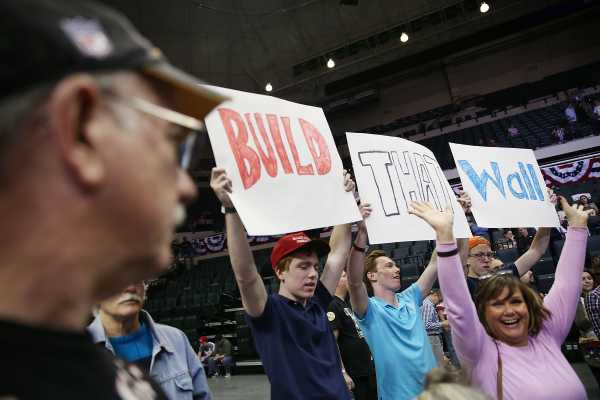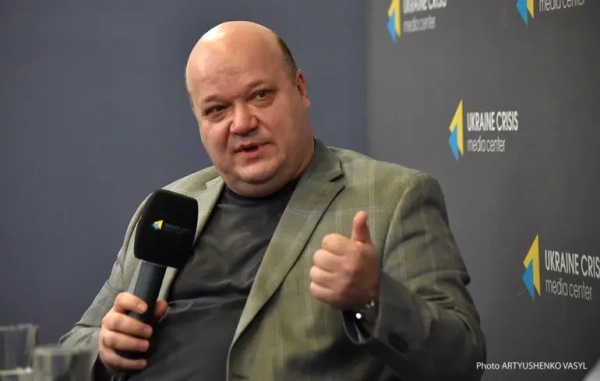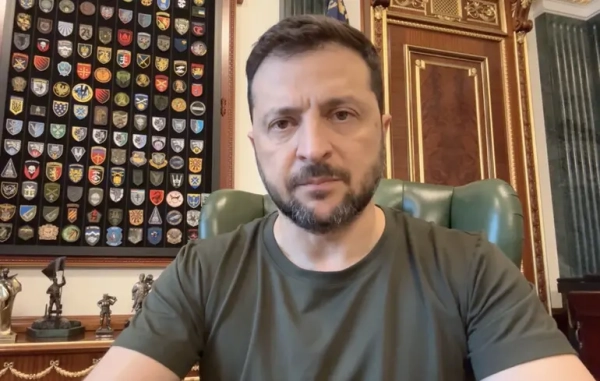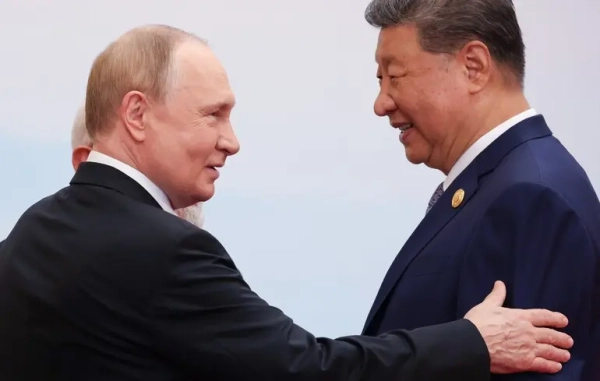
Donald Trump didn’t have a lot of detailed plans when he ran for president in 2016, but how Mexico would pay for the border wall was actually one of them. He’d like everybody to go ahead and forget about that now.
Trump, speaking with reporters on Thursday on his way to McAllen, Texas, discussed his insistence on a wall at the US-Mexico border that has now resulted in a partial government shutdown lasting nearly three weeks.
“When I said Mexico will pay for the wall in front of thousands and thousands of people, obviously they’re not going to write a check,” he said.
Except that’s pretty much what he claimed on the campaign trail. During his 2016 presidential bid, a plan to make Mexico pay for the wall was actually one of the few specific things he laid out — including, essentially, the Mexican government writing a check for it.
“It’s an easy decision for Mexico: make a one-time payment of $5-10 billion,” a campaign document titled “Pay for the Wall” from his presidential bid reads.
The president, who is now trying to get US taxpayers to foot the bill for his border wall, has of late started saying Mexico will pay for the wall indirectly, namely, through the USMCA trade deal to replace NAFTA. That’s not going to work, either, but it’s important to note that Trump had a plan for Mexico to pay for the wall directly not so long ago.
Trump definitely had a plan for Mexico to pay for the wall
Trump has gone on quite a journey on how to get his border wall built, including his ideas for how Mexico would pay for it. But during the presidential race, he actually had some fairly detailed plans about it — they’re still on his campaign website.
The Trump campaign said that it would either require Mexico to make that aforementioned one-time payment, or it would extract the money from Mexico by blocking remittances to the country and undertaking other measures.
It would invoke Section 326 of the US Patriot Act — the “know your customer” provision that requires financial institutions to know who they’re dealing with in transactions — to issue “detail regulations” under 31 CFR § 130.120-121 that would block remittance payments to Mexico from unauthorized immigrants.
The administration would then issue a rule that would include within the definition of financial institutions money transfer companies such as Western Union, include wire transfers in the statute’s scope, and require immigrants prove their lawful presence in the US before sending money.
The timeline from there, the campaign said, was straightforward: Mexico would immediately protest, because $24 billion in remittances from Mexican nationals in the US go out each year, and it would then pay for the wall instead of losing that money.
As Vox’s Dara Lind pointed out at the time Trump floated this proposal, Mexicans emigrants do send home a large amount in remittances. In 2013, it was $22 billion, and in 2017, it was more than $26 billion. But, per Lind, “that’s the amount of remittances sent to Mexico period — from legal immigrants, unauthorized immigrants, and even Mexican emigrants in countries other than the US.”
So maybe the Trump campaign’s remittance plan wasn’t entirely fleshed out, but even so, it had backup proposals, which you can also still find online:
As MSNBC’s Katy Tur noted, it wasn’t just the detailed policies either. The implication on the campaign trail was always “something simple like cutting a check,” she said on Twitter.
Trump has no idea how he’s getting this wall thing done
Trump clearly recognizes that the wall is a big deal for his supporters, and failing to make progress on it will be a big deal, politically. What he doesn’t know is how to follow through, at least not at the moment.
He’s changed the way he talks about the wall, switching out the 30-foot concrete wall he talked about on the campaign trail to his current insistence that he’s really after steel slats. He’s been all over the place on how much money he needs for the wall and has started to say he might declare a national emergency in order to get one, whether there’s an actual emergency or not.
The president seems well aware that American taxpayers are the ones who will pay for any current pathways he has to the wall, and so he’s trying to argue that Mexico will in some convoluted way pay the US back through trade. As my colleague Jen Kirby explains, that’s false. The USMCA hasn’t been approved by Congress yet, and even if it is, it won’t pay for the wall:
Trump’s original campaign plan for Mexico to pay had problems— as Vox’s Matt Yglesias recently noted, the campaign’s remittance proposal cited the wrong statute, and remittance payments go back to Mexican residents, not the government. But at least there was some sort of a plan, even if Trump now wants to pretend it was something else.
Sourse: vox.com






